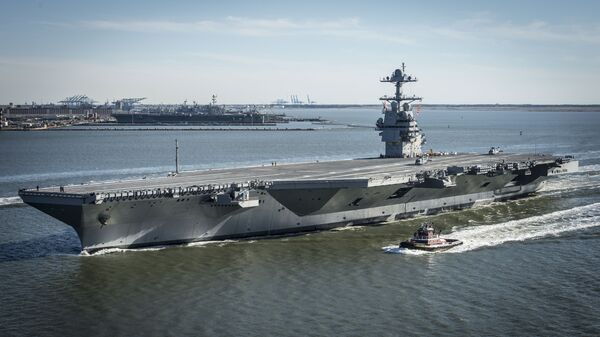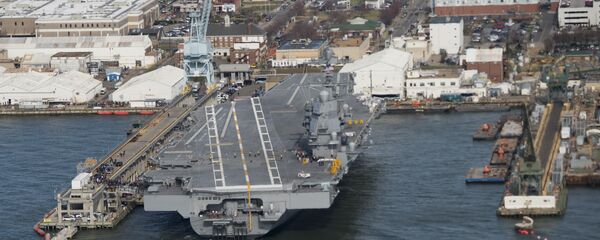The problem with the catapult is that it is unable to launch F/A-18 Super Hornet and E/A-18 Growler aircraft loaded with the external fuel tanks they need for long-range missions.
Tests revealed that the catapult, officially called the Electromagnetic Aircraft Launch System (EMALS), has a software problem, which causes "excessive vibration" in wing tanks aboard the aircraft.
Moreover, the money EMALS’ maker, General Atomics, wants to fix it, would triple the cost of the ship’s deck arrester system, jacking it up to $961 million from $301 million now.
The electromagnetic catapult is more lightweight compared to the steam catapult systems used by other carriers, as it puts less stress on the plane while accelerating it off the deck. It costs less to maintain too.
Other concerns lie with the carrier’s weapons elevators’ ability to move onboard munitions, and the radar’s ability to conduct air traffic control with ship self-defense — all of which could result in another delay to the ship’s delivery program, which is already behind schedule, Naval-technology.com wrote.
Fixing the problem with money
Andrei Frolov, editor-in-chief of Arms Export journal, described the snags as “teething problems” any new generation ship or aircraft inevitably encounters.
“Things like this always happen when you are building a complex new ship. The French aircraft carrier Charles de Gaulle is too short for planes to take off and land properly. In the case of the Gerald Ford, if the problems [with the launch and recovery system] are unrelated to its overall structure, then the Americans will eventually fix them,” Frolov told Vzglyad.
Alexander Khramchikhin, deputy director of the Institute of Political and Military Analysis in Moscow, said that the EMALS is a completely new design and that the Americans will ultimately bring it up to speed.
“They will make it right by spending a few billions of dollars more. They have billions galore,” Frolov chuckled.
“The Americans are trailblazers when it comes to building [aircraft carriers]. No one is equal to them or even comes close,” he added.
The aircraft carrier USS Gerald R. Ford, the first in the US Navy's next generation of warships, was initially expected to enter service in 2014, but was commissioned into the fleet only in May 2017.
There are 10 aircraft carriers currently in service with the US Navy. Each of them cost an estimated $4.5 billion to build, which is almost 10 times less than the Gerald Ford. Each such carrier ship costs around $160 million a year to operate.






